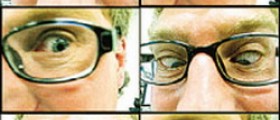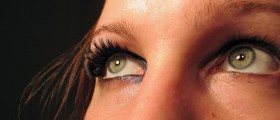
Double vision refers to a condition whereby two images of the same object is seen. The problem can occur in either a single eye, or both eyes. Double vision is also known as diplopia; when it occurs in both eyes it is called binocular diplopia, whereas diplopia affecting one eye is known as monocular diplopia. The former is more common than the latter. Monocular diplopia is generally caused by functional problems with the visual system, whereas binocular diplopia occurs as a result of structural problems in the eye.
Causes
The retina exists in order to receive light rays emitted by an object. The retina then creates a signal that is then carried to the brain, through the optic nerves. This is what creates the perception of being able to see images. Light rays are first received by the pupil, then cross the cornea, and travel through the aqueous humor and to the lens. After this, rays strike the retina, and depending on the part of the retina they strike, the image and its location can be properly identified.
Those without visual problems will receive stimulation in the retina of both eyes. This will lead to a properly calibrated, single image. On the other hand, those with functional flaws will not be able to reconcile the images receive from the two retinas, and thus, two images will be registered. This is, in essence, double vision.
Certain diseases can lead to double vision. Some thyroid problems can affect the external eye muscles, leading to the eyes being unable to point the same way. Diabetes is another disease that can cause negative effects to be experienced with regard to the nerves in the eye. Another disease that can potentially lead to problems is multiple sclerosis, which is a neurological problem.
Some people might suffer from corneal problems. These problems can occur due to infection of the cornea. Problems such as this can also arise due to LASIK surgery. Corneal problems might cause a distortion with regard to the direction of the light rays, thus leading to diplopia. An abnormal curve in the retina is also known as astigmatism.
Some people might also suffer from problems with their lens, such as cataracts and dislocated lens. Nerve problems can also be a factor; one such problem is Guillain-Barre syndrome. Some brain complications, like aneurism, can also lead to the onset of diplopia. Dry eyes are another potential cause of the problem.

















Your thoughts on this
Loading...